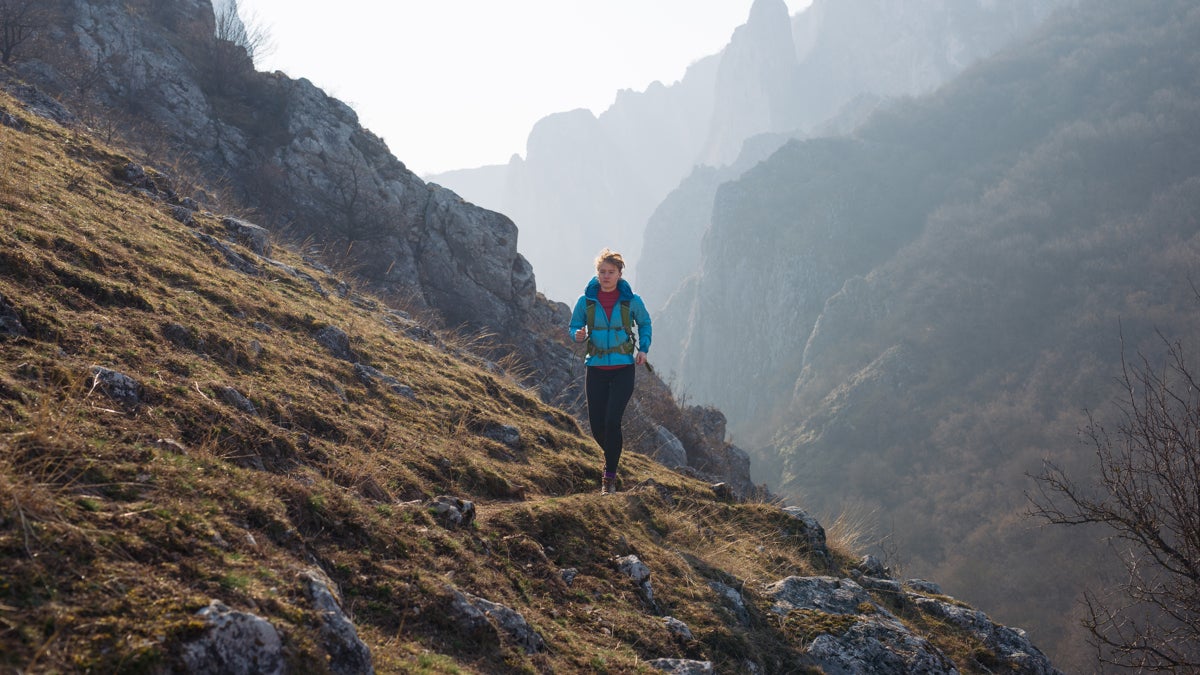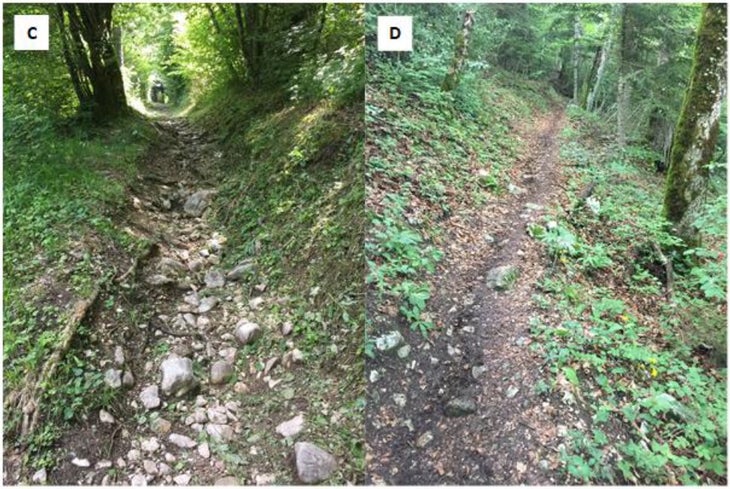
Here’s a new word for the trail running world: technicity. In a recent study on uphill trail running, the term ground technicity refers to roots and rocks, sand and mud, slipperiness, unevenness, and all the other characteristics that distinguish an interesting path from a plain old road or track. It’s borrowed from the French word technicité, meaning “technical quality or character,” and was first used in English in a 1933 newspaper report paraphrasing a dispute between two French socialist politicians. It’s a bit awkward, but I can’t think of any better alternatives. Technicality, for example, has a bunch of other connotations (like “loophole” or “meaningless detail”).
So, with the terminology settled, how does the technicity of a trail affect the way you run up it? That’s what François Nicot of the Université Savoie Mont Blanc and his colleagues at several other universities in France set out to determine, publishing their results in the European Journal of Sport Science. They had ten volunteers run up two trails, one with low technicity and the other with high technicity. Then they replicated those runs on a treadmill, matching the slope, distance, and speed in 100-meter (328-foot) increments, in order to figure out how their strides changed and how much extra energy the technical trails burned.
Both trails were on the eastern side of Montagne-du-Chat, in the Savoie region of France. Each segment was about 1,000 meters long (a little more than half a mile), with relatively steady slopes to avoid sudden jumps in effort, and took about ten minutes to complete. The low technicity trail climbed 190 meters (623 feet), and the high technicity trail climbed 200 meters (656 feet). In case your intuition for what constitutes low and high technicity is a little rusty, here are pictures of the two (with high technicity on the left):

So what’s the difference between running on smooth versus technical terrain? In terms of biomechanics, the biggest one is the amount of side-to-side motion. The magnitude and variability of side-to-side foot accelerations more than doubled on the trails compared to the treadmill, with similar increases for both trails. Cadence (the number of steps per minute) was less affected. On the low technicity trail, there was no significant difference compared to the treadmill. On the high technicity trail, cadence was 4.6 percent lower, presumably because the runners were sometimes stretching out their stride to get over a root or rock.
The runners wore a heart-rate monitor, a GPS watch, and a breathing mask connected to a metabolic analyzer to measure their energy expenditure. Not surprisingly, oxygen consumption (a proxy for energy) was higher on the trails than on the treadmill. But there wasn’t a significant difference between the two technicities: the easy trail burned 10.4 percent more energy than its treadmill analog, while the hard trail burned 11.4 percent more. The heart rate values followed a similar pattern.
In contrast (and surprisingly), there was no apparent difference between treadmill and trails for perceived effort. There are a few reasons that the treadmill runs might have felt just as hard even though the physiological measurements suggested they were easier. One is that treadmill running lacks the cooling airflow of overground running. But a simpler one, the researchers point out, is that most people find running on a mountain trail very pleasant compared to slogging away on a treadmill in a lab. That pleasure difference may have bled into the subjective ratings of effort.
Ultimately, the conclusion that technical trail running is harder than smooth-surface running won’t surprise anyone. Previous research had estimated that running on level ground over simulated uneven terrain on a treadmill burned about five percent more energy than smooth terrain. The new research suggests ten percent on uphill trails—but the difference may have more to do with the outdoor setting, which permits rougher terrain and more side-to-side motion than a treadmill, than with the uphill slope. These numbers start to give us a sense of just how much slower we should expect to run on rough trails—and they hint at the prospect of a brave new world, many studies into the future, where popular routes and trail races incorporate a new word into their vocabulary and advertise their scientifically validated technicity rating.
For more Sweat Science, join me on Twitter and Facebook, sign up for the email newsletter, and check out my book Endure: Mind, Body, and the Curiously Elastic Limits of Human Performance.
The post Here’s How Much Extra Energy a Gnarly Trail Burns appeared first on Outside Online.
by mmirhashem via Outside Online
Comments